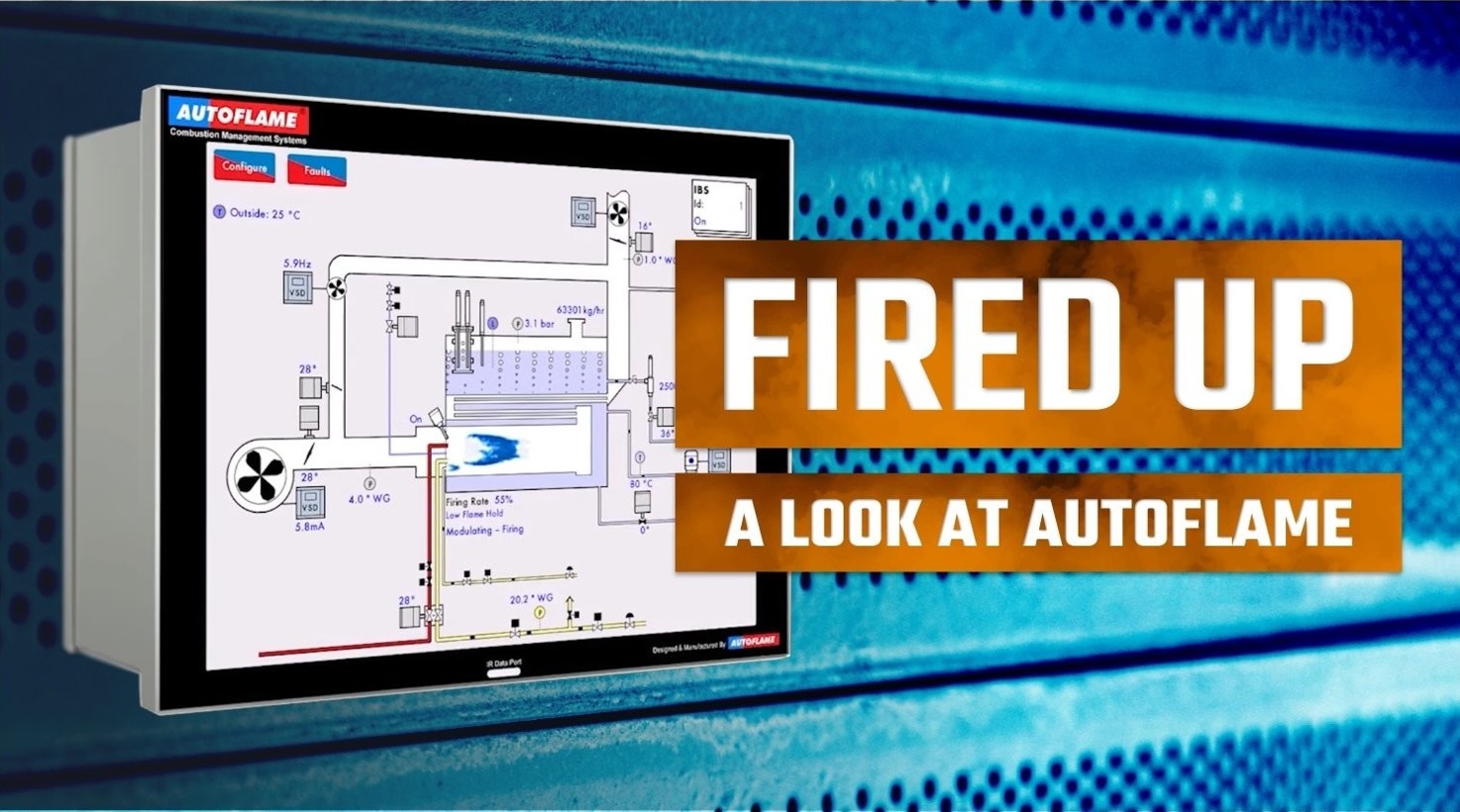Boiler controls have come a long way in the past decades. Proper boiler operation used to rely on humans taking frequent temperature, pressure, and water level readings, and making manual adjustments to the flow of fuel, feedwater, and steam. These days, however, automation has made boiler operation a lot easier, and a lot better in every way. With the help of automated controls, boilers can run more efficiently and safely, and can get more out of every energy dollar. One of the companies leading that charge is AUTOFLAME, a WARE partner for more than 20 years.
Evolution
When AUTOFLAME was founded in 1968, boiler control systems were more mechanical in nature. Temperature and pressure controls used manual thermostats and pressure switches connected to physical control systems, with mechanical linkages and jackshafts connecting valves directly to control motors. While they were a step above turning valves by hand, mechanical systems had their drawbacks.
The mechanical linkages between motors and valves would develop slack over time, requiring calibration and adjustment on a regular basis to keep the boiler operating efficiently. If the slack wasn’t taken out, the movement of the control motors wouldn’t necessarily translate to the same movement in a valve or damper. That would lead to incorrect fuel and air levels, and inefficient combustion.
In the 1980s, though, things started to change with the advent of the microprocessor. AUTOFLAME was one of the first companies to realize the true potential of electronic monitoring and control, and how “fly by wire” systems could use electronic signals instead of mechanical linkages to make adjustments to the flow of fuel and air.
AUTOFLAME Today
Today’s AUTOFLAME control systems are more sophisticated than ever, relying on a network of sensors that give constant readings to the controls, which in turn operate remote servo motors and stepper motors to adjust air and fuel flow. Because the boiler control system is able to receive multiple updates every second, and act on that information immediately, boilers can now react to changes in demand in the blink of an eye.
These sensors create a feedback loop that allows the control system to keep the boiler right where it needs to be. By making constant micro-adjustments to fuel valves and air dampers, AUTOFLAME systems can effectively fine-tune a boiler’s performance every second. That means that no matter what’s happening, the boiler is always getting exactly what it needs, and is outputting exactly what’s needed in terms of steam production, without using more fuel than it needs to. In fact, AUTOFLAME systems can save up to 12% in fuel use, which translates to substantial savings.
Face the Interface
Today’s AUTOFLAME systems don’t just improve the connection between sensors, dampers, and valves. They also improve the connection between humans and boilers. Old mechanical controls used to be simple, but imprecise; moving a set point needle on the controls system would adjust the cutoff point or the start point on the burner. Then PLC controllers came along, allowing more automated control. However, they still required programming to be able to work properly.
Today’s AUTOFLAME systems, however, are sleeker, simpler, and more capable than ever. The control interface is now a large, full-color touchscreen, similar to a tablet, that shows the operator exactly what’s happening and where. Furthermore, adjustments are as simple as a few taps of a finger. Because the AUTOFLAME system is built around a standard framework, calibration and programming aren’t needed. The operator simply tells the system what parameters it needs to maintain, and the system goes to work. The sensors feed data into the system, and the system makes adjustments to create the specific temperatures and pressures that the operator has specified. What’s more, instead of the regular linkage checks and adjustments of old, AUTOFLAME systems only require quarterly safety checks.
Old Boilers Can Learn New Tricks
If you want to get the efficiency that an AUTOFLAME system brings, you don’t necessarily have to rip out your whole boiler and start over again. While AUTOFLAME systems do create the most pronounced results with newer burners, an older system can still gain a lot of new efficiency with an AUTOFLAME system running things. Retrofitting is a lot more cost effective than you might think, especially with the regular fuel cost savings realized from the increased operating efficiency.
Beyond the Flames
The current line of AUTOFLAME systems do more than just control combustion. They’re what’s known as “3-Element Systems”, meaning they monitor and adjust fuel, air, and water levels all with one completely integrated system. With an AUTOFLAME 3-element system in place, air, fuel, and water are all optimized to work together in perfect harmony. These systems are particularly useful for large-scale operations, because when you’re generating a lot of steam, a sudden surge in demand can correlate to a drop in the tank’s water level. With the AUTOFLAME system in place, feedwater can be supplied as needed so even in huge demand periods, the tank always has plenty of water available.
If you’d like to learn more about how the AUTOFLAME Mark 8 can change your boiler operation forever, please let us know. If you’re interested in a retrofit to your existing boiler, we can help with that, too. In fact, if you need parts, service, a new or rental boiler, or anything at all, WARE is always here to help.
